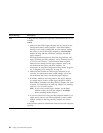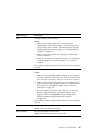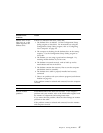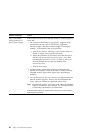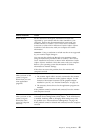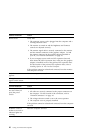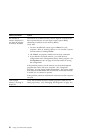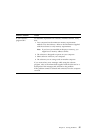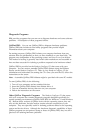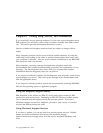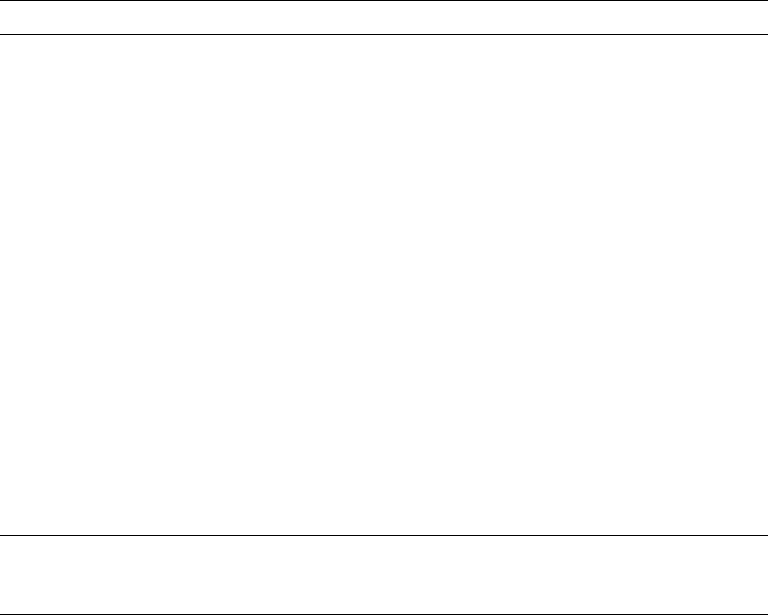
Memory Problems Action
The amount of
memory displayed is
less than the amount
of memory installed.
The amount of available memory shown might be somewhat less
than expected because of basic input/output system (BIOS)
shadowing in random access memory (RAM).
Verify that:
1. You have installed the correct type of DIMMs for your
computer. Refer to Installing Options in Your Personal Computer
for instructions on adding DIMMs.
2. The DIMMs are properly installed and securely connected.
3. If you added or removed memory, you saved the new
configuration in the Configuration/Setup Utility program. See
the Important text box on page 22 for instructions on saving
the configuration.
If the problem persists, run the memory test from the diagnostic
program that comes with your computer. (See “Diagnostic
Programs” on page 96 for further information.) The system might
have detected a bad DIMM and automatically reallocated memory
to enable you to continue to operate.
If the problem cannot be isolated and corrected, have the computer
serviced.
“Not enough
memory” message is
displayed.
Verify that terminate-and-stay-resident programs (TSRs) are not
taking up memory. (See “Managing TSR Programs” on page 97.)
92 Using Your Personal Computer



